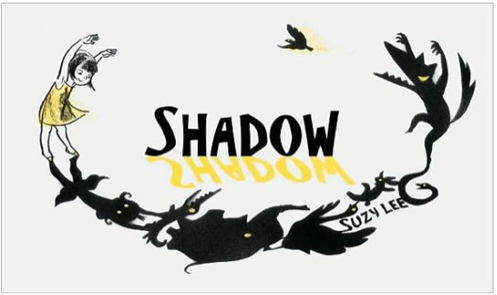shadowland by suzy lee
/A very interesting kid's book that has very few words. It is almost all illustrations. A birthday gift from my friend Carol and to be read to little Jackson. John always takes Jackson in dark rooms or closets and talks to him and shows him things. So this book must be read to Jackson by his PapaG. This book will go in the babysitting bag next to the 101 Dalmatians movie.
Here is a favorite review that Carol sent.
In “Shadow,†Suzy Lee, a South Korean illustrator, depicts a little girl playing in her family’s attic. From the very beginning, Lee’s story knows that it is in a printed book. The orientation of the drawings invites the reader to turn the book on its side so that the pages flip bottom to top rather than right to left.
The girl and the objects stored in the attic — a ladder, a pair of worn-out shoes, a broom, a bike — crowd the top page. The bottom page shows the shadows that the girl and the attic’s contents cast in the light of a ceiling-mounted bulb.
The girl’s play is both typical and endearing. She fans out her fingers to make the shape of a bird. She puts an old shoe on her head and pretends to be a storybook wolf. As the girl’s game progresses, the shadows beneath her come to life. The finger-bird flies from her fingers. The broom in the corner becomes a giant exotic flower, and the tires of the bicycle turn into the sun and moon. As each item transforms, its mundane incarnation disappears from the top page and its fantastic shadow below emits a yellow, otherÂworldly glow. The seam that separates the top page from the bottom is no longer simply an artifact of print technology — it is a border between the world the girl sees and the world she imagines.
Soon, the shadows themselves realize this. To the girl’s horror, the shoe-wolf leaps over the seam and into the attic, ready to eat her. The finger-bird saves the girl by leading her over the seam and into the world of shadow and yellow glow. There, magical creatures protect her.
Lee is a natural at drawing children. Her pictures evoke a timeless charm reminiscent of Crockett Johnson and Sheldon Mayer. The girl’s expressions and poses are those of a child, not those of an adult shrunken in size.
More impressive than Lee’s cartooning, however, is her understanding of the properties unique to the printed book as storytelling devices. Could the pages of “Shadow†be scanned into a computer and read on a screen? Certainly, but that border between the real and the imagined, presented here as a divide that can be felt by the reader’s fingertips, would be reduced to a row of pixels in a slightly darker hue. The shoe-wolf’s leap would be between two spots on a screen rather than from one world to another. In printed form, “Shadow†suggests a third reading at yet a different orientation. By turning the book another 180 degrees, the reader puts the shadows on top, giving the story an entirely new feel.
(Thanks again Carol!)

